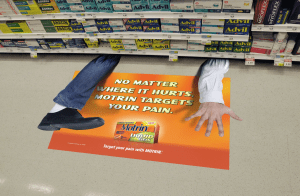In a world flooded with digital impressions and banner blindness, marketers are asking harder questions about performance—especially when it comes to CPM in media. While traditional CPM calculations favor low-cost, high-impression digital placements, the reality is far more nuanced.
How does cpm advertising in physical spaces like pharmacy bags or coffee sleeves stack up against Facebook ads or YouTube prerolls? The answer might surprise you.
In this blog, we’ll explore why evaluating cpm in media requires context, not just math—and why in-hand media may be a smarter long-term strategy for engagement and ROI.
CPM in Media: What It Really Means Today
CPM, or cost per mille, measures the price of 1,000 advertising impressions. It’s one of the most commonly used metrics in digital marketing—but also one of the most misunderstood.
On paper, a lower cpm ad seems like a better deal. But ask yourself:
Were those impressions actually seen?
Were they noticed in a meaningful way?
Did they result in any action, recall, or brand lift?
Too often, cpm in media is treated as a vanity metric—cheap and easy to manipulate, but light on substance.
Digital CPM: Low Cost, Low Impact?
Let’s look at cpm media in some of the most common digital formats:
Format | Avg. CPM Range | Visibility/Engagement |
Display Banners | $1 – $3 | Low |
Facebook/Instagram Ads | $5 – $15 | Moderate |
YouTube Pre-Roll | $10 – $30 | Low to Moderate |
Programmatic Video | $15 – $40 | Varies widely |
These numbers seem appealing—until you factor in ad fatigue, scroll behavior, bot traffic, and viewability rates.
According to Moat Analytics, up to 54% of display ad impressions aren’t even seen by humans. That means a $5 cpm ad might really cost you double—or worse—per actual view.
In-Hand CPM Media: Fewer Impressions, Higher Engagement
In-hand advertising—media physically placed in consumers’ hands—is a different animal.
This includes formats like:
Coffee cup sleeves
Pharmacy bag ads
Pizza box toppers
Hotel keycard inserts
Bar coasters
Here’s a snapshot of cpm in advertising using in-hand formats:
In-Hand Format | Avg. CPM Range | Engagement Level |
Pharmacy Bag Ads | $25 – $40 | High |
Coffee Sleeve Ads | $30 – $60 | Very High |
Pizza Box Top Ads | $20 – $35 | Moderate to High |
Hotel Keycards | $40 – $70 | Very High |
Yes, the cpm in media here is higher. But the quality of each impression is radically better.
There’s no scroll-by or auto-skip.
The ad is touched, read, and often held for several minutes.
It’s seen in a relaxed environment—waiting rooms, living rooms, coffee shops.
If a brand message is physically in someone’s hand when they’re thinking about health, food, or leisure, that’s not just a view—it’s a moment of attention.
Case Study: Coffee Sleeve Ads vs. Instagram CPM
Let’s compare two hypothetical campaigns, both with a $10,000 budget.
Campaign A: Instagram Ads
CPM = $10
Impressions = 1,000,000
Est. visibility = 30%
Est. attention rate = ~1.5 seconds
Total meaningful interactions = ~20,000
Campaign B: Coffee Sleeve Ads
CPM = $50
Impressions = 200,000
Est. visibility = 100%
Est. attention rate = ~60 seconds
Total meaningful interactions = 150,000+
Despite a much lower impression count, the cpm advertising value of the in-hand campaign is exponentially higher in terms of dwell time, recall, and engagement.
Why Marketers Need to Rethink CPM in Media
Here’s the core problem: marketers often chase volume over value.
But the real question is what are your impressions doing for you?
In-hand ads offer:
Contextual relevance
Physical engagement
Emotional resonance
Low competition for attention
Meanwhile, digital cpm ads are increasingly ignored, blocked, or skipped.
As privacy regulations tighten and performance attribution becomes fuzzier, relying solely on programmatic cpm media is risky.
Hybrid Strategy: When to Use CPM Ads vs. In-Hand CPM Media
If you need broad awareness fast (e.g., movie launch, app download), digital cpm ads can play a role.
But for:
Local businesses
Healthcare brands
Food delivery services
Community awareness campaigns
…the tactile experience of in-hand media often delivers better results per dollar.
Blending both approaches lets you capture top-of-funnel reach and mid-funnel retention.
Final Thoughts: CPM in Media Is About More Than Math
It’s easy to get seduced by $3 CPMs. But cpm in media is only as valuable as the attention it earns.
Marketers who shift focus from cost per thousand to cost per meaningful moment will build stronger brands and more effective campaigns.
And as digital clutter grows, the real breakout results won’t come from pixels on a screen—they’ll come from print in a hand.






